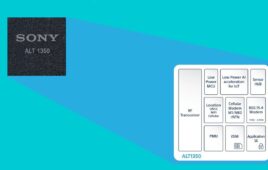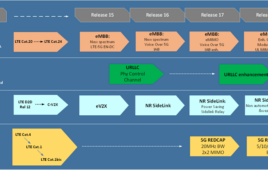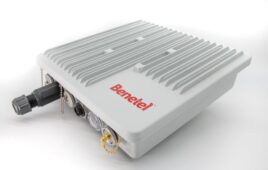Symbian may dominate the world in operating systems, but it’s never had a strong showing in the U.S. market, where the handset giant needs to make some serious progress.
As if Nokia’s global challenges aren’t daunting enough, its U.S. predicament is particularly problematic. Nokia is reaffirming its determination to succeed here. What does Stephen Elop, the new CEO, need to prescribe for North America that will also help restore its global position?
 Whereas Nokia was riding high elsewhere worldwide until Apple’s 2007 iPhone launch, its moderate North American position declined for nearly a decade. Nokia had over half TDMA phone sales, but TDMA was plummeting by 2004. It even fared modestly well in CDMA for a while, supplying up to a quarter of Sprint’s handsets for some quarters in the first half of the last decade. But its position in CDMA was tenuous, with several strategic shifts and a couple of aborted joint ventures – one in chipsets with TI and STMicroelectronics, the other in handsets with Sanyo.
Whereas Nokia was riding high elsewhere worldwide until Apple’s 2007 iPhone launch, its moderate North American position declined for nearly a decade. Nokia had over half TDMA phone sales, but TDMA was plummeting by 2004. It even fared modestly well in CDMA for a while, supplying up to a quarter of Sprint’s handsets for some quarters in the first half of the last decade. But its position in CDMA was tenuous, with several strategic shifts and a couple of aborted joint ventures – one in chipsets with TI and STMicroelectronics, the other in handsets with Sanyo.
Most significantly, its U.S. position in GSM and UMTS (i.e., WCDMA/HSPA) has remained lackluster compared to elsewhere. Strong intellectual property rights with advantageous cross-licensing provided Nokia and a few others significant competitive advantage that helped propel Nokia to global leadership by a substantial margin with global products in GSM and UMTS and global market shares in the 35 percent to 45 percent range.
Unwilling to bend to U.S. carriers’ local requirements (e.g., clamshell form factor), Nokia’s global product strategy deprived it of sufficient carrier route-to-market and associated subsidies. Flagship products such as the 9000 Series “Communicators,” N Series and E Series made minimal sales. Its Symbian smartphone operating system is still the world leader despite a fall in recent years from in excess of 60 percent market share, but this platform has never been on more than a few percent of U.S. handsets sold. All technologies combined, Nokia’s North American handset market share has plunged to less than half its peak of around 20 percent toward the middle of the last decade.
NO PLACE LIKE HOME
Nokia is undeterred in its dedication to Symbian, despite suggestions by some commentators it should switch to Android. Commitment to hold the course by the world’s leading mobile phone hardware and software platform provider is justified, but what is still tantamount to U.S. market entry is only more difficult since 2007. It is not just a desire to tap the most valuable market worldwide for sales; North America is also the epicenter for software platforms and application developments. All the other leading ecosystems, including Android, RIM, Windows Mobile/Phone, Palm and Brew Mobile Platform, are clustered here.
Nokia is on the back foot in apps. In Elop’s cameo appearance message at Nokia World 2010 in London, he emphasized the importance of developers. Rejecting criticism of its conservative applications total, Nokia understates diversity by excluding apps – such as foreign language – deemed irrelevant to specific users. Consequently, Nokia is repeatedly depicted as a slowcoach with only 13,000 apps, versus 80,000 for Android and 225,000 for iPhone. The Financial Times reported this ranking in two separate articles during the week of the show: In one case, it reinforced the figures’ impact with a bar chart emphasizing the disparity. App counts have cosmetic impact, but dubious significance. How many of the 294 Android horoscope applications do you need?
The United States turned from smartphone laggard just a few years ago to leader with the advance of BlackBerry and iPhone. No longer just a place to supplement sales elsewhere, significant presence is now a prerequisite for success worldwide. It is essential that leading developers stateside are familiar with Nokia’s ecosystem and are motivated to write applications for or port them to its platforms, including Series 40 at the low end and upcoming MeeGo for mobile computing devices as well as Symbian. North American developers need a local test bed and successful home market here. Nokia’s common development environment Qt will help take these guys in many directions, including to farflung geographies and into embedded devices, but the starting point has to be smartphone apps such as games in the U.S.
POSITIONING AND PROPOSITION
Success in the U.S. must include significant headway with one or both of the market leaders AT&T and Verizon Wireless. Optimizing software with chipsets is critical. Nokia announced a partnership with Qualcomm for “advanced UMTS mobile devices, initially for North America,” in February 2009. The intention was for the devices to be based on Symbian. Qualcomm joined the Symbian Foundation and was appointed to its board of directors later that year. The partners are silent on progress. Meanwhile, it is also crucial that Nokia finds its spot in carriers’ portfolios. For now, its foothold must be below the high end of the smartphone market to avoid direct conflict with iPhone and others such as Samsung’s Galaxy and Motorola’s Droid.
In conjunction with AT&T in particular, Nokia needs an alternative value proposition to these heavyweight smartphones with their entrenched ecosystems. Elop and his team need to be really clever and quite focused here.
Mallinson is founder of WiseHarbor, solving commercial problems in wireless and mobile communications, www.wiseharbor.com. He can be reached at kmallinson@wiseharbor.com




